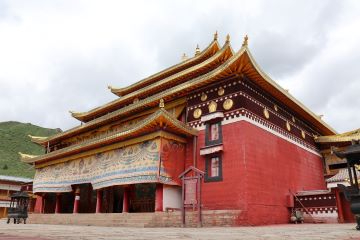Climb to No.1 Maiden Peak
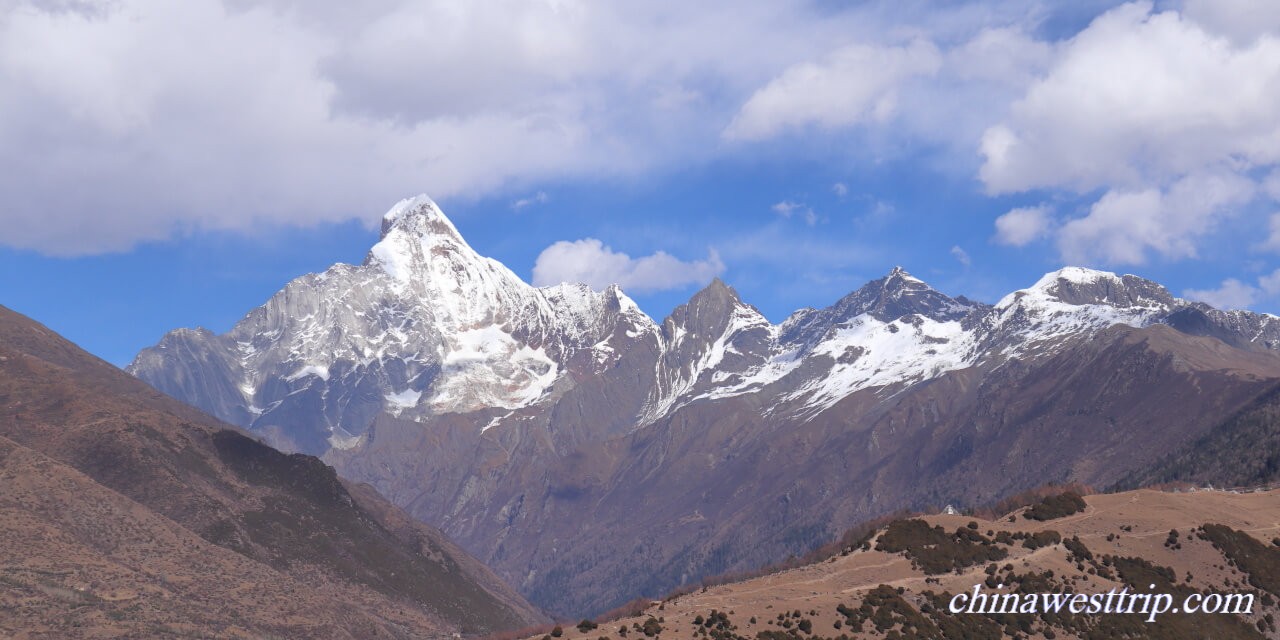
Name in Chinese: 四姑娘山 Sì Gū Niáng Shān [si gu: niæŋ sæ]
Duration of Tour: Two or Three Days
Location: Aba Tibetan and Qiang Minorities Autonomous Prefecture, Sichuan Province
Highlights: Photography, Trekking, Mountain Climbing, and Outdoor Sports
Must-see Sightseeing Spots: Sigunacuo Lake of Shuangqiao Valley, Longzhucuo Lake of Shuangqiao Valley, the Four Peaks, the Withered-trees Shallow Stream of Changping Valley, Muluozi Pasture of Changping Valley, Dahaizi Lake of Haizi Valley and the Flower Lake of Haizi Valley
Reputations: National Geo-park, A World Natural Heritage Site, One of the Main Nature Reserve for Giant Panda, A National Four-star Scenic Area, the Paradise for Outdoor Sports
Siguniang Mountain belongs to Qionglai Mountain Range. It is well-known as the oriental Alps, the paradise for both photography and outdoor sports. Siguniang means four maidens or four daughters in English. Siguniang Mountain attracts visitors with its awe-inspiring natural beauty. It is a wonderland where people can be enchanted by the mirror-like lakes, the snow-capped mountains, the murmuring streams, the virgin forests, the wild animals and birds.
A folk tale goes that a long time ago a man safeguarded the land where he lived. He had four daughters. Unfortunately, a devil came. The devil killed people everyday for eating their heart. He heard that the four maidens were very pretty. So, he wanted to marry them all. The father refused. The devil became angry, and made trouble to the local people. A flood occurred due to his revenge. The father fought against the devil and was killed. The four maidens followed their father’s step, kept fighting against the devil. They turned themselves into four mountains and buried the devil under their bodies. Among the four daughters, the youngest one was the most beautiful and tall. Local people call it as Yaomei Peak which is 6,250 meters(20,505 feet) above sea level. It is the second highest mountain in Sichuan Province, and nicknamed as the Queen of Sichuan Mountains.
The whole scenic area consists of three valleys, Shuangqiao Valley, Changping Valley and Haizi Valley.
Shuangqiao Valley
Shuangqiao Valley is located at the northwest part of the scenic area. It is considered as the most beautiful one among the three valleys. Its altitude ranges from 2,900 meters(9,514 feet) to 3,800 meters(12,467 feet) above sea level. Shuangqiao Valley is 34.8 km(21.6 miles) in length. It covers an area of 217 square kilometers(31,382 acres). The valley lies between mountain ranges. Vegetation coverage rate is quite high. In the autumn, the tree leaves turn red or pink. White clouds are hanging in midair, sky-touching cliffs tower over the mirror-like lakes. The sapphire sky, white clouds, snow-capped mountains, and colorful forests are reflected in the water. Shuangqiao Valley is nicknamed as a landscape gallery. The sightseeing spots include the Redwood Grove, the White Pagoda, Sigunacuo Lake, Nianyuba Pasture, and Longzhucuo Lake.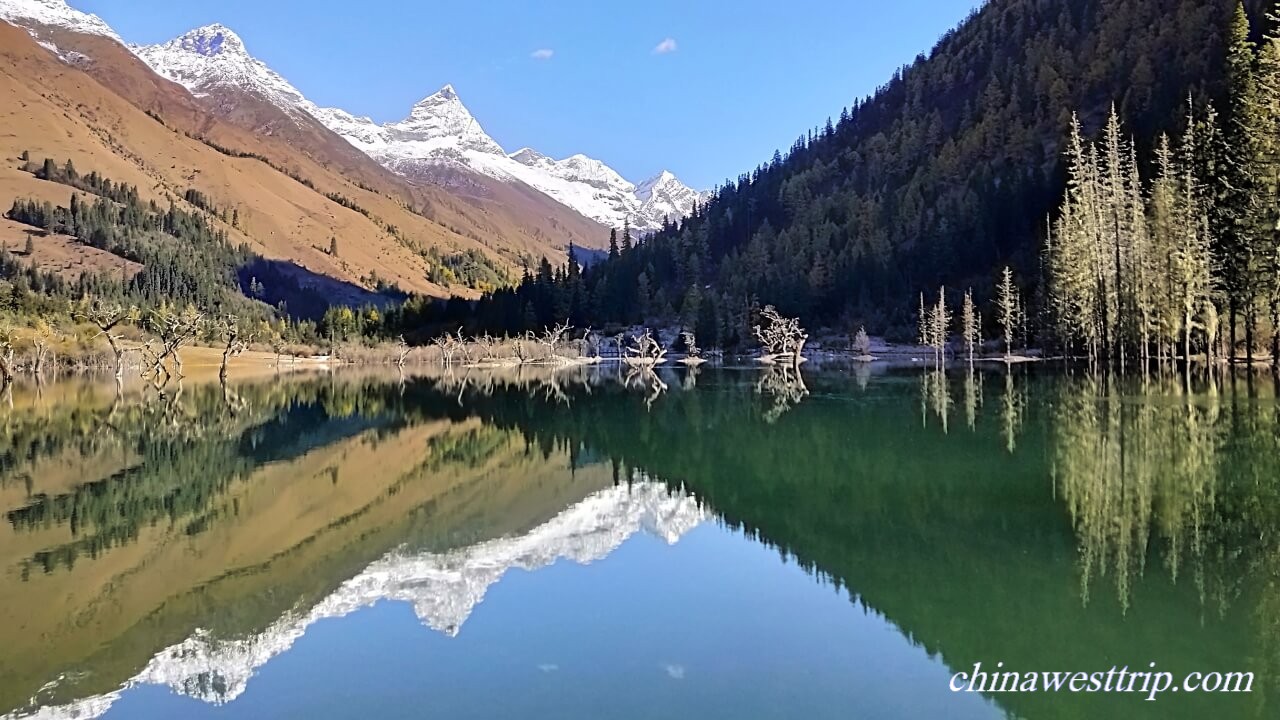
Sigunacuo Lake
Sigunacuo Lake is 3,580 meters(11,745 feet) above sea level. The lake covers an area of 8,000 square meters(2 acres). According to the folk tale, Sigunacuo Lake is the swimming pool of the four fairy maidens. It is the most ideal place for visitors to get a view of reflection in the valley. The lake mirrors the blue sky, white clouds, colorful forest and the shapely figure of mountains.
Nianyuba Pasture
Nianyuba Pasture is about 3,500 meters(11,483 feet) above sea level. A wooden path stretches into the wetland along the murmuring stream. Some wild fruit trees stand by the riverside, yaks and goats are grazing on the pasture. Visitors can walk along the path or go rafting along the stream.
Longzhucuo Lake
Longzhucuo Lake is 3,490 meters(11,450 feet) above sea level. It is well-know as a bonsai landscape for the withered sea-buckthom trees standing gracefully in the still clear water.
How to Visit Shuangqiao Valley
Sightseeing bus is operated in Shuangqiao Valley. Visitors often take sightseeing buses along the winding road to the last stop, the Redwood Grove. That is a place where people can walk around to view snow-capped mountains and glaciers. It is located on the top of the valley, is about 3,800 meters(12,467 feet) above sea level. Then the visitors may ride the sightseeing buses down to the sightseeing spots along the road. The buses stop at the White Pagoda, Sigunacuo Lake, Nianyuba Pasture, Longzhu Lake and Renshenguoping Pasture. Visitor need to change buses at each stop. The tour in Shuangqiao Valley usually takes about four hours.
Changping Valley
Changping Valley lies at the northeast part of the scenic area. It is 29 km(18 miles) in length. Its altitude ranges from 3,100 meters(10,171 feet) to 4,800 meters(15,748 feet) above sea level. Siguniang Mountain stands on its east side. Changping Valley is an ideal place for people to go trekking. Visitors are enchanted by the snow-capped mountains, the colorful virgin forests, the babbling running streams, the blooming wild flowers, the wild animals and birds, all the landscapes under the blue sky and white clouds. The sightseeing spots in Changping Valley are the Sigula Lamasery, the Shallow Stream with Withered Trees and Muluozi Pasture.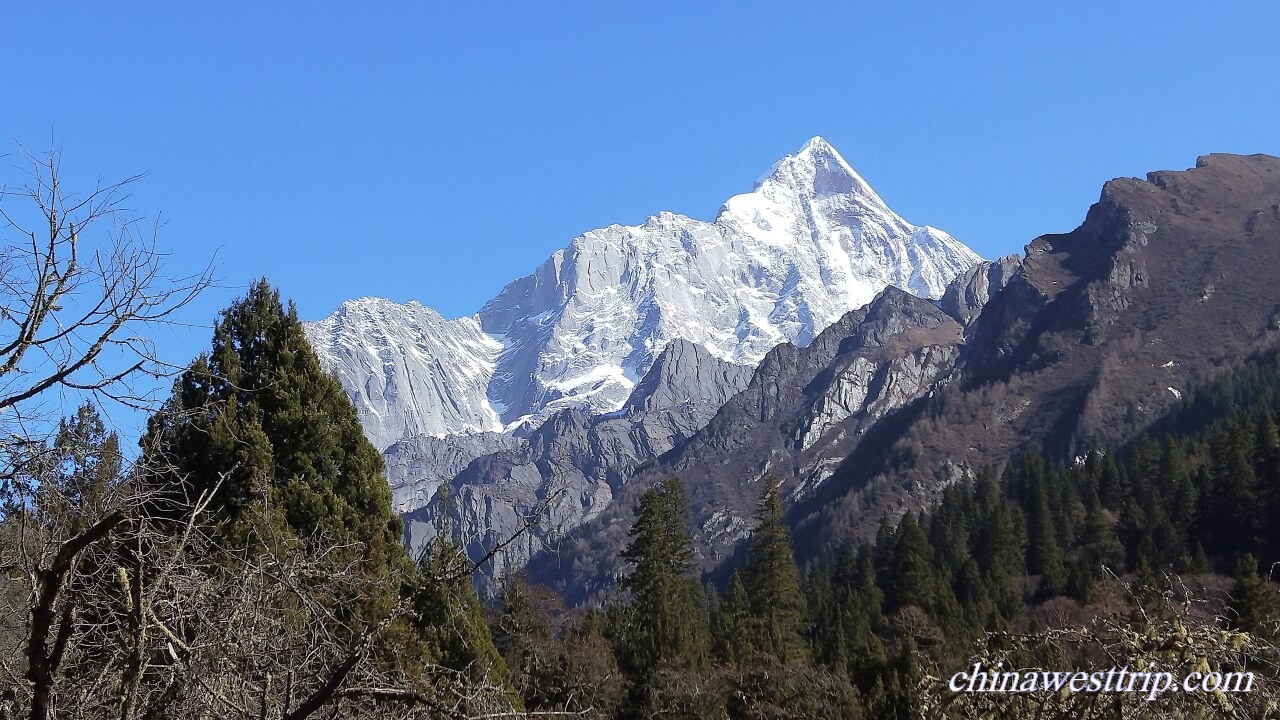
Yaomei Summit( the No.4 Maiden Summit)
Yaomei Summit is 6,250 meters(20,505 feet) above sea level. It is second highest one in Sichuan Province, nicknamed as the Queen of Mountains in Sichuan.
The Sigula Lamasery
The Sigula Lamasery was rebuilt by a local chieftain around 400 years ago. It is typical Gelugpa Monastery. Gelugpa is called the Yellow Sect of Tibetan Lamaism, is the most prospered school of Lamaism at present. It was initiated by Tsongkhapa Master. Six hundred years ago, Awanzaba, one of the top six disciples of Tsongkhapa Master went to western Sichuan for his missionary work. He made a pledge to his teacher that he would build up 108 lamaseries in Tibetan areas. The Siguna Lamasery is supposed to be one of the 108 lamaseries. The lamasery is the start of walking path.
The Shallow Stream with Withered Trees
The Shallow Stream with Withered Trees is 3,500 meter(11,483 feet) above sea level. Water is running through withered sea-buckthom trees. It is about 3,130 meters(10,269) away from the lamasery. Because the altitude is quite high, visitors should walk slowly.
Muluozi Pasture
The pasture is 3,650 meters(11,975 feet) above sea level. It is 10,368 meters(6.44 miles) from the lamasery. The wooden paved path stretches 6km(3.73 miles) into the valley from the lamasery. The end of the path is called Xiaganhaizi which means the lower dry-lake. A winding trail leads to Muluozi Pasture and further places.
How to Visit Changping Valley
Sightseeing buses run between the ticket office and the lamasery. Visitors take the buses to the lamasery, then start their trekking. For half a day tour, they can reach the Withered Tree Shoal. For a whole day tour, Muluozi Pasture is the possible terminal. Some people also arrange their trekking from Changping Valley to Bipeng Valley. They have to stay at camping sites for two nights, and climb a mountain pass. It is 4,800 meters(15,748 feet) above sea level, is called Chazigou Mountain Pass. The comping site for the first night is at Muluozi Pasture. The second is set near the mountain pass. The Chazigou Camping Site is 3,800 meters(12,467 feet) above sea level.
Haizi Valley
Haizi Valley lies at the east part of the scenic area. It is 19.2 km(12 miles) in length. Its altitude ranges from 3,100 meters(10,171 feet) to 3,800 meters(12,467 feet) above sea level. Compared with the two valleys mentioned above, Haizi Valley is the most difficult one for visitors to go hiking. It is a great challenge for common people. But for those who like trekking, it is an amazing paradise.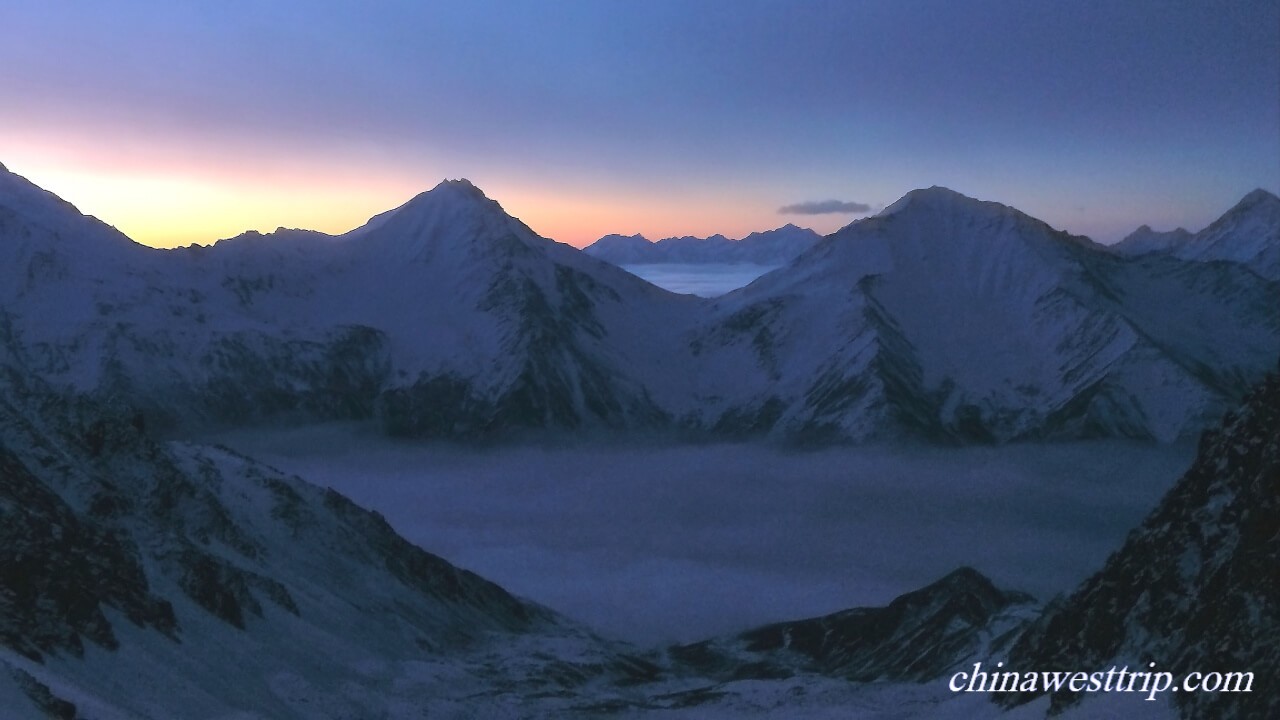
Dahaizi Lake
Dahaizi Lake is the largest lake in the whole Siguniang Mountain Scenic Area. It is 17 km(10.5 miles) away from the entrance, is about 3,800 meters(12,467 feet) above sea level. It was formed due the movement of glacier. The lake is called Cuoqian in Tibetan language. A folk tale goes that Cuoqian was a beautiful women who fell in love with a handsome man. But the man loved the Maiden No.2 and married her. Cuoqian felt jealous and sad. She cried and her tears fell into the ground, then turned into a beautiful lake. It is suggested not to make noise near the lake, because she is sleeping in her tears. Sometimes it rains suddenly, if people scream there.
The Flower Lake
The Flower Lake is a wetland where wild flowers bloom around. It is 19 km(11.8 miles) away from the entrance, is about 3,830 meters(12,566 miles) above sea level. June is said to be the most ideal time to visit the Flower Lake.
How to Visit Haizi Valley
Visitors can go for two lakes by walking or riding a horse. Packed lunch is needed. It is a ten-hours tour. Climbers also take their ways to the No.1 Maiden Peak and No.2 Maiden Peak through Haizi Valley. Laoniuyuanzi is 11 km(6.8 miles) away from the entrance and is a fork of the trail. Visitors take the right-hand track to the lakes. Climbers should take the left one up to the camping site. It takes two days for them to go climbing the No.1 Maiden Peak or No.2 Maiden Peak.
How to Get to Siguniang Mountain
Siguniang mountain is situated in Xiaojin County, Aba Tibetan and Qiang Minorities Autonomous Prefecture, Sichuan Province. Its east longitude extends from 102°42’30” to 102°58’40”, its north latitude ranges from 30°54’16” to 31°16’21”. The town nearby is called Rilong or Siguniangshan Town, located 204 km(127miles) northwest to Chengdu. It takes 4 hours to get to the town from Chengdu by a car. The high speed railway between Chengdu and the town is under construction.
Travel Tips:
How to Avoid Altitude Sickness
The altitude of Siguniang Mountain is quite high. It ranges from 3,100 meters(10,171 feet) to 3,800 meters(12,467 feet) above sea level. Some people may suffer from High Altitude Sickness. Visitor should try to avoid the AMS. Please read more about AMS.
Weather
The temperature in Siguniang Mountain ranges from minus 2℃(28.4°F) to 13℃(55.4°F) in spring, 9℃(48.2°F) to 22℃(71.6°F) in summer, 10℃(50°F) to 24℃(75.2°F) in autumn and minus 1℃(30.2°F) to 14℃(57.2°F) in winter. The best time to visit Siguniang Mountain is between September and October. Visitors should try to avoid going to Siguniang Mountain in the rainy season. The rainy season in Sichuan lasts from July to August.
Because the altitude is high, visitors should prepare warm coat and try to decrease the risk of catching a cold.
Lunch
Visitors need to prepare packed lunches for the tours to both Changping Valley and Haizi Valley.
Photography Tips:
A tripod, a filter, telephoto lenses and wide angle lenses are needed. Both Sigunacuo Lake and Longzhucuo Lake are the most ideal places for a view of reflection. The best time to get to the lakes is before 9 A.M., because the lakes usually ripple from 9:30 A.M. to 4:30 P.M. in sunny days. For the Four-maiden Peaks, Changping Valley offers several viewing platforms for photographers to get good angles. But the best one is not in the valley. It is called Maobiliang Mountain Ridge. The viewing platform is located by the road which leads to the town, is 7 km(4.3 miles) away from the town. The four peaks are beautiful and awe-inspiring. When the weather is good, the mountain peaks turn yellow or pink under the rays of sunset.
Recommended Tours:
Twelve-day West Sichuan Pure Land and Tibetan Culture Exploring Tour
Four-day Siguniang Adventure Tour
Related Articles:
Danba Tibetan Villages
Altitude Sickness
Author: Tina Luo
Update:
